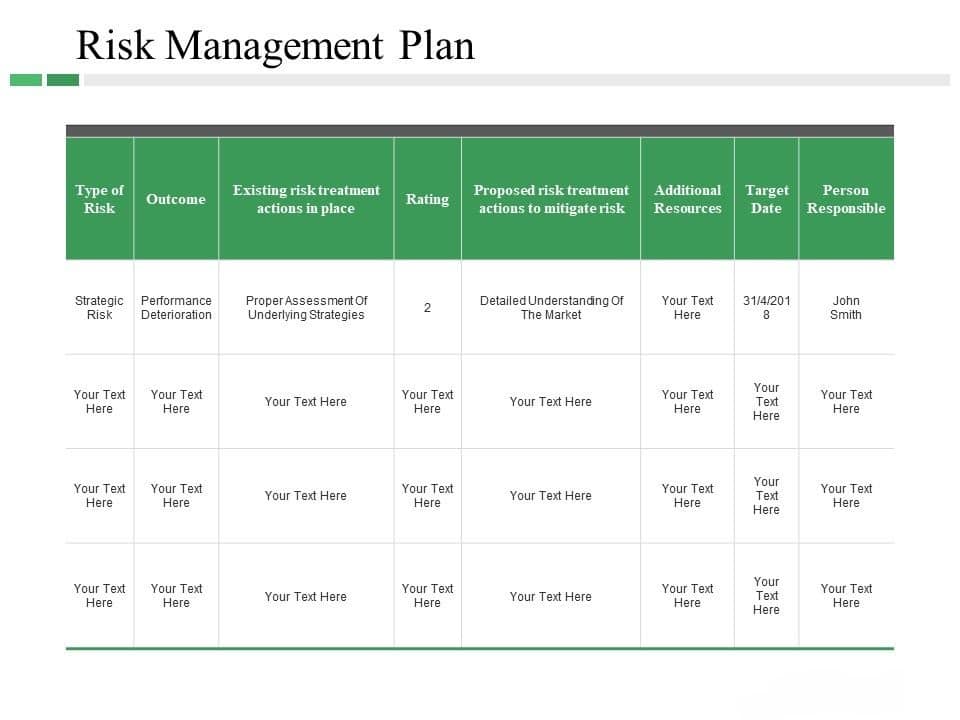It is often said that taking preventive measures beforehand is always preferable to curative measures. This is applicable to all aspects of life! Even when it comes to analyzing possibilities during the lifecycle of a project. Whether it’s linked to costs, plans, or procedures, projects face challenges during execution. In reality, at least one out of every six IT projects becomes a “black swan” due to a 200 percent cost overrun or a 70 percent schedule overrun! These are negative threats that arise suddenly and cause problems. And, if not handled properly, could jeopardize a project’s overall performance! So, how can such unanticipated threats be identified, managed, and confronted? Well, putting in place an appropriate risk management plan, combined with the right tools (say Bit.ai or Google Docs for example) could help!
Today, more than 27% of companies include risk management practices in their project management plans. This is because a well-planned risk management in place can reduce project problems by 80%–90%!
As a result, a good risk management plan can help you avoid unanticipated risks. This is basically achievable by considering all of the potential scenarios that can arise during the course of a project’s execution.
In just a few easy steps, you’ll learn how to build a well-thought-out risk management plan for all of your projects. You just need to hang on for a little while longer.
What exactly is a Risk Management Plan?
A risk management plan is a well-defined document that explains how to handle particular risks and what management steps must be taken to minimize or eliminate threats to project activities and outcomes.
The risk management plan literally instructs teams of the steps they must take to identify, assess, and respond to all of the risks that are present in the project.
Note: The risk management plan definition above is applicable to a wide range of programs, including IT and business initiatives!
This plan is part of a broader risk management process that runs over a project’s life cycle. Furthermore, the risk management mechanism brings together all of the powers that motivate the project management team to take action in order to mitigate risks.
Risks Can Be Handled/Managed in Four Ways:
We all know that risks are unpredictable when it comes to project planning. However, some of the threats you planned to avoid do occur, and that is when you must deal with them.
So, there are a variety of ways to deal with risks. However, the response you select should be determined by the likelihood of the risk occurring and the severity of the risk’s effects on the project.
Avoid: When it comes to risks, the best course of action is, more often than not, to avoid it! It will hardly have any effect on your project if you can easily prevent it from happening.
Mitigate: If you can’t eliminate risk, you can at least shield it to reduce impact. This entails taking conscious steps to ensure the impact does the least amount of harm to your project.
Transfer: Transferring a risk to a third party is another excellent way to deal with it. And purchasing insurance is one of the easiest and most popular ways to do this.
Accept: If nothing else works, you’ll have to accept it. Accepting the risks allows you to work on avoiding them ahead of time.
However, by the time a risk shows up, it is often too late to intervene! This is why you need a well-thought-out risk management plan from the start.
Steps to Creating a Risk Management Plan from the Ground Up!
Every new project brings with it a new set of risks. If your company can’t completely eliminate threats, it should be able to mitigate and predict them with the help of a risk management plan.
You’ll however need to streamline the team’s risk management strategy and make them more flexible and agile when dealing with negative incidents by following these measures.
#1. Take the first step. Determine the risk
Foreseeing potential project pitfalls doesn’t have to feel like a dead end for a business. Identifying risks, on the other hand, is a learning experience that the entire team will benefit from and participate in.
In risk management, you can quickly draw on the entire team’s combined expertise and knowledge. Request that the team members recognise any threats they are aware of or have previously encountered. This move promotes connectivity and cross-functional learning.
#2. Examine the risk
It’s time to dig a little deeper once you and your team have identified potential issues.
Now you’ll need to ask the following questions to effectively analyze the risk;
How often do these dangers occur?
And, if they do, what will be the ramifications?
Your team will assess the consequences and likelihood of each risk in this step to determine where to focus first.
Risk analysis considers things like the organization’s potential financial loss, lost time, and the magnitude of the effects.
Eventually, you’ll discover any common problems across a project. This will help you fine-tune the risk management plan for potential projects by putting each risk under the microscope.
#3. Prioritize the Risk
Now it’s time to prioritize your risks after you’ve done an in-depth analysis of them. Consider the likelihood of each risk occurring as well as its potential impact on the project when ranking them.
This step gives you a bird’s-eye view of the project and identifies where the team should concentrate its efforts. But most importantly, it will aid them in identifying feasible solutions for each risk that has been prioritized.
As a result, the project will avoid delays and disruptions during the treatment stage.
#4. Treat the Risks
This involves setting up the treatment plan once the risks have been established. Begin with the highest priority risk and evaluate the team’s ability to either mitigate or solve the risk so that it no longer poses a threat to the project.
However, effectively managing and handling risk often entails making the best use of the team’s resources while keeping the project on track. As time passes and you amass a broader archive of your previous projects—including risk logs, you will be able to anticipate future hazards more proactively rather than reactively.
#5. Keep an eye on the risk.
As the project progresses, the risk management plan keeps track of all the hazards that may arise along the way. And since the plan’s whole outcome is reported, keeping track of those moving goals becomes crucial! It’s important to go through this document on a regular basis.
The Advantages of Creating a Risk Management Plan
Risk management plans have a number of advantages that make the document worthwhile for any business. And for the most part, from assisting companies in identifying possible threats to managing them, we’ve got you covered.
Companies will prepare for these threats and deal with them as they occur if they are conscious of them.
#1. Enhances Results
Your chances of successfully completing a project increases when you define a risk management plan for your company. It minimizes and reduces negative risks, allowing projects to be completed on time.
This also helps the team to stay within budget and achieve its objectives.
#2. Assists you in being proactive rather than reactive.
Instead of continuously battling fires, having a transparent risk management plan allows you to be proactive and take action to minimize possible problems before they occur.
In the long run, your team will take the identified risk and transform it into actionable plans that will minimize the probability of it occurring.
#3. Helps you Assess the whole Project
You can measure the effectiveness of your tasks by managing risk exposure and exploiting opportunities that build on your organization’s strengths with the help of a risk management plan. In other words, it assists you in evaluating the progress of your current project and developing best practices for the future.
How to create a Risk Management Plan with Examples
Are you ready to start writing your risk management plan? Well, there are tons of risk management plan tools out there that’s capable of helping you out in the least possible time.
We will just go through an example of the several risk management plan tools at your disposal—the most popular of which is Bit.ai
Bit.ai is a new age online document sharing platform that allows you to create amazing risk management plan papers, project management plans, product plans, and other company documents in minutes. Bit is a pretty good example of an ideal risk management plan tool for teams that want to make their planning process more immersive and collaborative.
Furthermore, Bit provides a central location for workers to collaborate and execute tasks at the same time, as well as share expertise. It also has a content library where you can save and easily access all of your photos, files, and digital content, making your workflow as smooth as ever!
Simply create a workspace, invite your team members, and begin quickly producing workplace documents such as product plans! You may also share these documents with external customers, associates, organizations, and others to get accurate feedback about how they worked with them!
Other tools capable of carrying out the same functions in a different light includes Google Docs, WPS, Online Microsoft Word and so on.
However, just incase you need an sample as to what a risk management plan should look like, here is one;

You’ll find more details about this sample in our post on risk management strategies.
What Are the 5 Steps to a Risk Management Plan?
There are 5 steps to a successful risk management approach.
- Identify the risk.
- Assess the risk.
- Put the risk first.
- Handle the risk.
- Observe the risk.
What Are the Main Contents of Risk Management Plan?
A good risk management plan typically consists of five components. They consist of definitions, assumptions, and a structure describing the risk breakdown, impact, cost, and timetable.
What Is an Example of a Management Plan?
A management plan may specify, for instance, how many salespeople would be needed and how much it will cost to achieve a 25 percent increase in sales. Prioritizing goals and tasks involves ranking objectives according to their relative value.
What Is the Purpose of Using a Risk Management Plan?
The objective of a risk-management plan is to assist you in identifying, evaluating, and planning for potential project management risks.
DISCLAIMER!
This tools are subject to your choice of decision and verification. We are not sponsored by any of the platform and the information provided here is to the best of our knowledge.
Final Thoughts
In all types of projects, risks are unavoidable. You will minimize error more effectively if you have a clearly defined risk management plan to guide you through the process.
Meanwhile, it’s important to remember that a risk management plan is a living document that must be updated as circumstances change. This is why document sharing tools like Bit are ideal for creating such documents because they allow you to edit any document in real-time and make adjustments as required, as well as use them as guides before beginning a project.
- Risk Management Process: Easy 5 Steps in 2023 & Best Practices
- Competitor Analysis: All you need (+ How to Start Guide)
- MARKET RISKS: Best Practices and Easy Guide with Examples
- Financial Risk Management: All you need to know (+practical examples)
- PROJECT FINANCE: Simple Guide to Kick start any Project(+ best picks)






